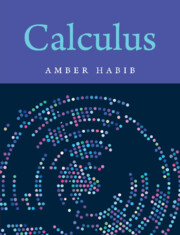Book contents
Summary
A calculus text written at this point of time can make its plea for existence on the novelty of its exposition and choice of content, rather than any originality in its mathematics. Let me state the case for this book. These explanations are primarily aimed at teachers, but students may also gain some perspective from them if they peruse them after going through at least the first two chapters.
The book aims to give a complete logical framework for calculus, with the proofs reaching the same levels of rigour as a text on real analysis. At the same time it eschews those aspects of analysis that are not essential to a presentation of calculus techniques. So it has the completeness axiom for real numbers, but not Cauchy sequences or the theorems of Heine–Borel and Bolzano–Weierstrass. At the other end of the spectrum, it omits the case for the importance of calculus through its applications to the natural sciences or to economics and finance.
The first chapter provides a description of real numbers and their properties, followed by functions and their graphs. For the most part, the material of this chapter would be known to students, but not in such an organized way. I typically use the first class of the course to ask students to share their thoughts on various issues. What are rational numbers? What are numbers? Which properties of numbers are theorems and which are axioms? What is the definition of a point or a line? What do we mean by a tangent line to a curve? These flow from one to another and from students’ responses. By the end of the hour, with many students firm in their beliefs but finding them opposed just as firmly by others, I have an opportunity to propose that we must carefully put down our axioms and ways of reasoning so that future discussions may be fruitful. One may still ask whether the abstract approach is overdone; is it necessary to introduce general concepts like field and ordered field? The reason for doing so is that it provides a context within which simple questions can be posed and the student can practice creating and writing small proofs as a warm-up to harder tasks that wait ahead.
- Type
- Chapter
- Information
- Calculus , pp. xv - xviiiPublisher: Cambridge University PressPrint publication year: 2023



